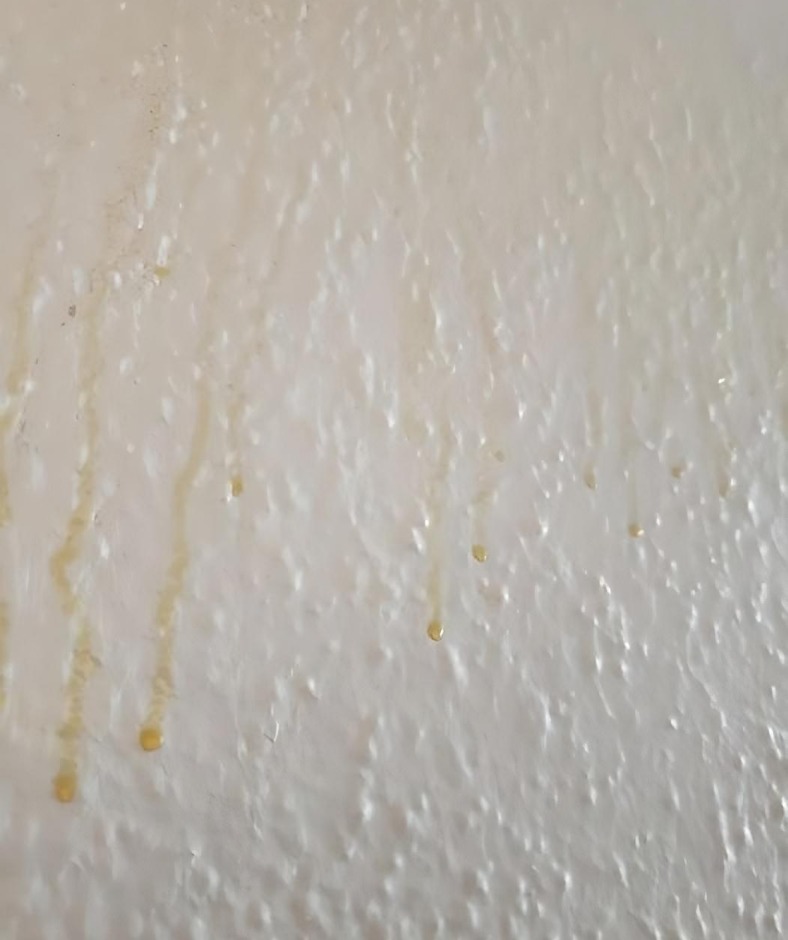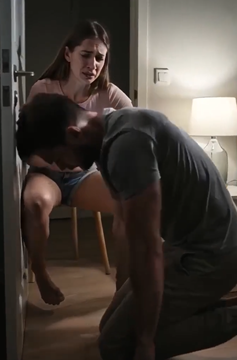If you’ve discovered strange yellow drips running down your bathroom walls, it’s natural to feel concerned. After all, the bathroom is supposed to be a clean, refreshing space, so yellow stains can be puzzling. If you’re asking yourself, “What on earth is causing this?”—you’re not alone. Let’s explore the possible reasons behind these yellow drips and how you can address them.

What Exactly Is Mold, and Why Is It Dangerous?
Mold is one of the most common problems in bathrooms, but it’s not just a cosmetic issue. Mold is a fungus that thrives in damp environments, and bathrooms often provide the perfect conditions for it to grow. When mold spores land on wet surfaces, they quickly multiply. While you may think mold is harmless, some types can pose serious health risks. Mold can trigger allergies, respiratory issues, and in some cases, even long-term health problems. That’s why it’s essential to catch it early.
The yellow stains you’re seeing on your bathroom walls could very well be mold, especially if there’s a musty smell or your allergies seem worse whenever you step into the bathroom. Mold thrives in warm, humid environments, which makes bathrooms a prime spot for mold growth due to the constant moisture.
What Causes Mold to Grow in Bathrooms?
In a bathroom, it’s not a question of if mold will grow, but when. After a shower, steam rises and creates condensation that clings to walls, ceilings, and tiles. Without proper ventilation, that moisture has no way to escape, creating the perfect breeding ground for mold.
Mold can also appear in hidden places like behind toilets, under sinks, or on ceilings. In some cases, it manifests as yellow or black streaks. Mold loves growing around windows, on shower curtains, and near plumbing fixtures. If you’re seeing yellow drips, mold might already be settling into your walls.
Other Possible Causes of Yellow Drips
While mold is a likely cause, it’s not the only explanation for those yellow drips. Here are a few other possibilities to consider:
1. Nicotine Stains
If previous residents of your home were smokers, nicotine residue could be the culprit. Over time, nicotine can seep through paint, particularly in high-moisture areas like bathrooms. Even if you’ve repainted, nicotine stains can push through the new layers, leaving yellow streaks behind.
2. Soap Scum and Hard Water Deposits
Another common issue is soap scum mixed with hard water deposits. If you live in an area with hard water, the minerals can build up on surfaces over time. When combined with soap residue, these minerals can leave behind yellowish drips on your walls.
3. Yellow Mold and Mildew
Yes, mold can be yellow. When it’s just starting to grow, mold can appear yellowish, especially when mixed with moisture or soap scum. This type of mold is just as dangerous as black mold, so it’s important to take action quickly.
How to Prevent and Remove Mold in Your Bathroom
Preventing mold is your first line of defense against yellow stains in the bathroom. Here are some practical tips to help keep your bathroom mold-free:
1. Improve Ventilation
Proper ventilation is crucial in bathrooms. Open windows, turn on exhaust fans, and leave the bathroom door open after showering to let moisture escape. This will help reduce humidity, making it harder for mold to grow.
2. Wipe Down Surfaces
After a shower, take a moment to wipe down walls and other surfaces where moisture tends to accumulate. This simple habit can go a long way in preventing mold from forming.
3. Use Mold-Resistant Paint
If you’re planning to renovate or repaint your bathroom, consider using mold-resistant paint. This specially formulated paint helps prevent mold from sticking to and growing on walls.
4. Clean Regularly
Regular cleaning is key to preventing mold. Focus on areas like the shower and bathtub, and use a cleaning solution specifically designed for bathrooms and mold prevention.
Cleaning Mold the Right Way
If you’ve already noticed mold growing on your bathroom walls, don’t panic—here’s how to deal with it effectively:
1. Use a Bleach Solution
For non-porous surfaces like tiles or sinks, a bleach solution works wonders. Mix one cup of bleach with a gallon of water and use it to scrub the mold away from the affected areas.
2. Try Natural Alternatives
If bleach is too harsh, you can opt for natural alternatives like vinegar or hydrogen peroxide. These natural cleaners are effective at removing mold without exposing your bathroom to harsh chemicals.
3. Wear Protective Gear
When cleaning mold, always wear gloves and a mask to protect yourself from inhaling mold spores or coming into contact with the cleaning agents.
4. Call in Professionals if Necessary
If the mold problem is severe or widespread, it’s best to call in a professional mold removal service. Mold can penetrate deep into walls, and without the right tools, it can be difficult to remove completely.
Conclusion: Don’t Wait to Take Action
Yellow drips on your bathroom walls are a clear sign that something’s wrong. Whether the cause is mold, nicotine stains, soap scum, or hard water deposits, it’s important to address the issue before it gets worse. Regular maintenance, proper ventilation, and quick action are key to keeping your bathroom clean and mold-free. If the problem persists, don’t hesitate to contact a professional for help.
By staying proactive, you can ensure that your bathroom remains a clean, safe, and welcoming space—free from any unwanted yellow streaks.





